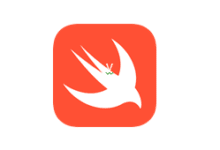Objective C
Objective-C is a high-level object-oriented programming language that was originally developed by NeXT and later adopted by Apple Inc. for use in its macOS and iOS operating systems. It is a superset of the C programming language and includes additional features for object-oriented programming.
Some of the key features of Objective-C include:
- Object-oriented programming: Objective-C is an object-oriented programming language, which allows developers to create classes and objects that encapsulate data and behavior.
- Dynamic binding: Objective-C supports dynamic binding, which allows methods to be called at runtime, making it easier to create flexible and extensible code.
- Automatic reference counting (ARC): Objective-C uses ARC to manage memory automatically, which helps prevent memory leaks and other memory-related issues.
- Interoperability: Objective-C can be used in combination with other programming languages, including C and C++, allowing developers to reuse existing code and integrate it with Objective-C.
Objective-C is used primarily for developing applications for Apple’s macOS and iOS operating systems. It has been widely used in the development of many popular iOS apps, and it is still used today, although it has largely been superseded by Apple’s newer programming language, Swift. Despite this, Objective-C remains an important language for many developers, particularly those who are working with older codebases or who need to maintain existing applications.




